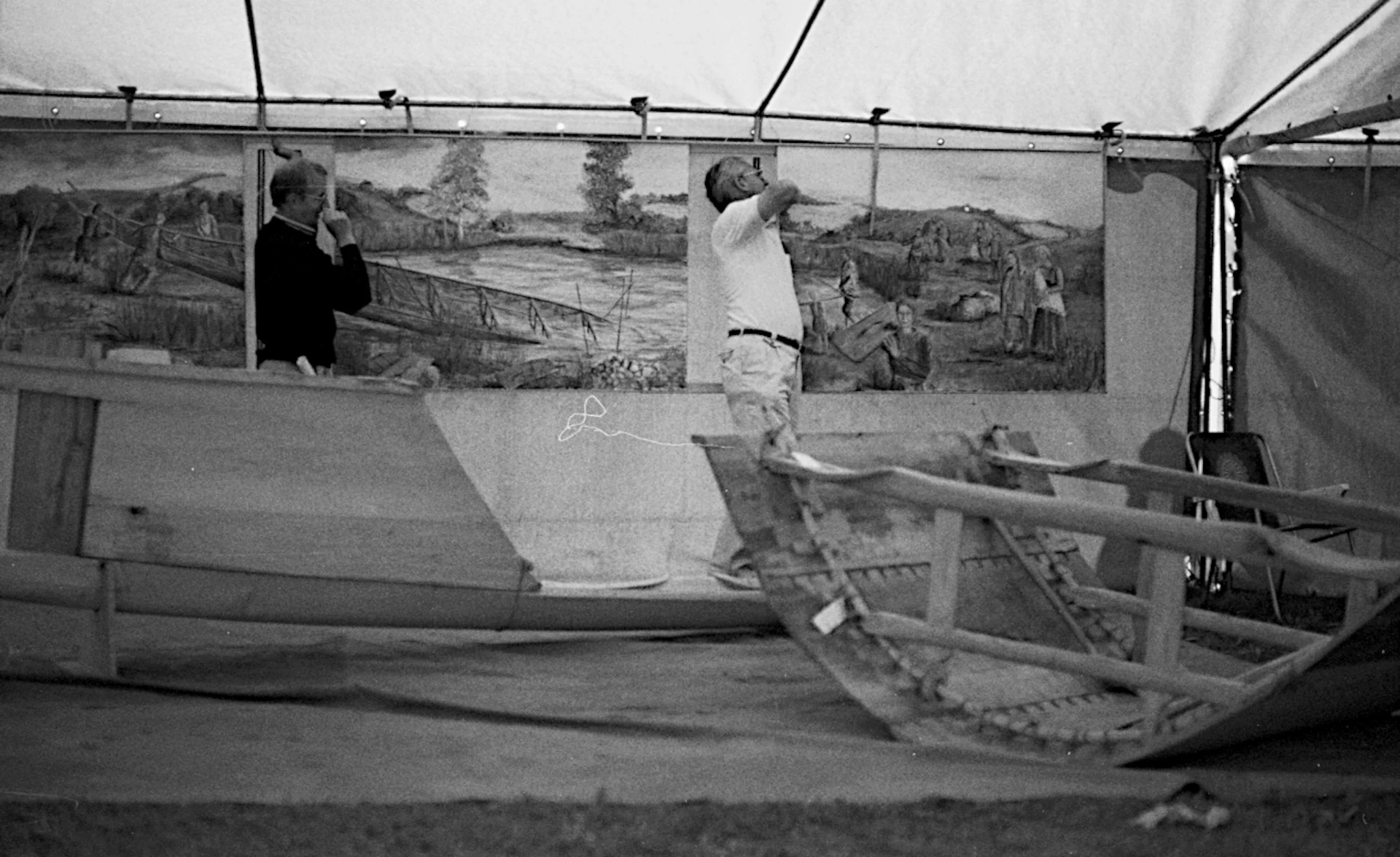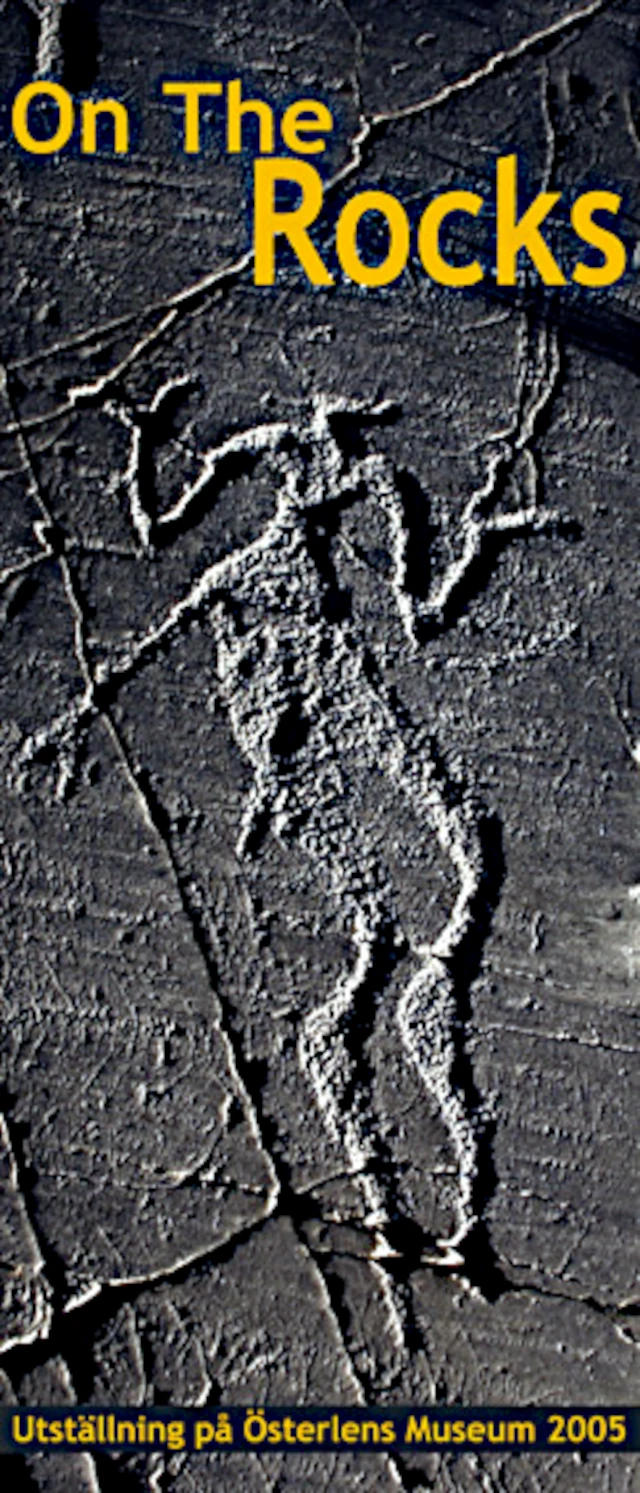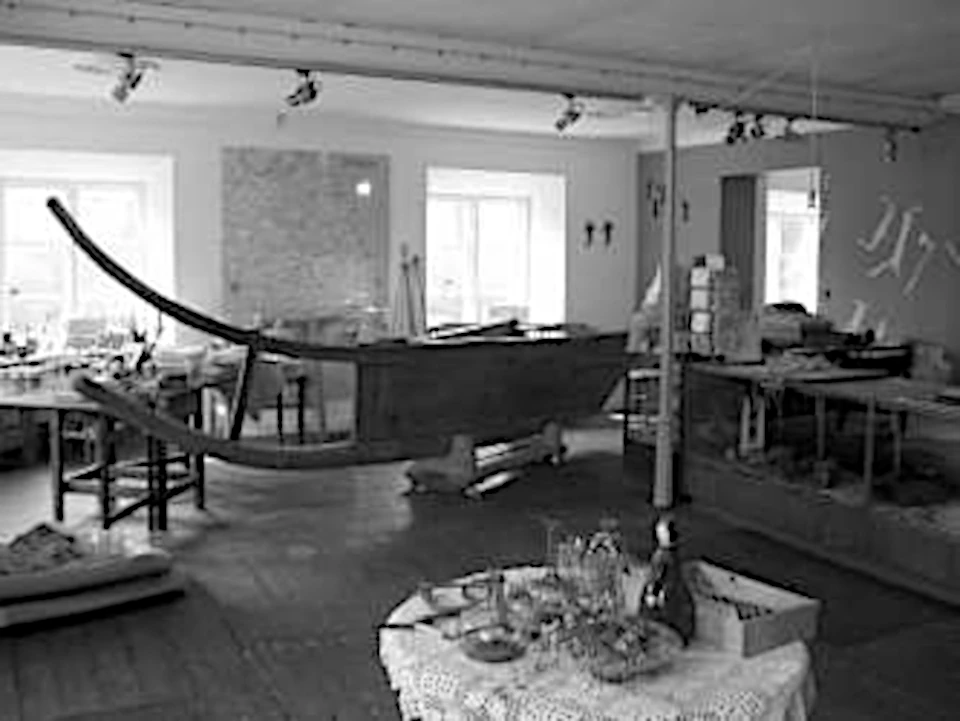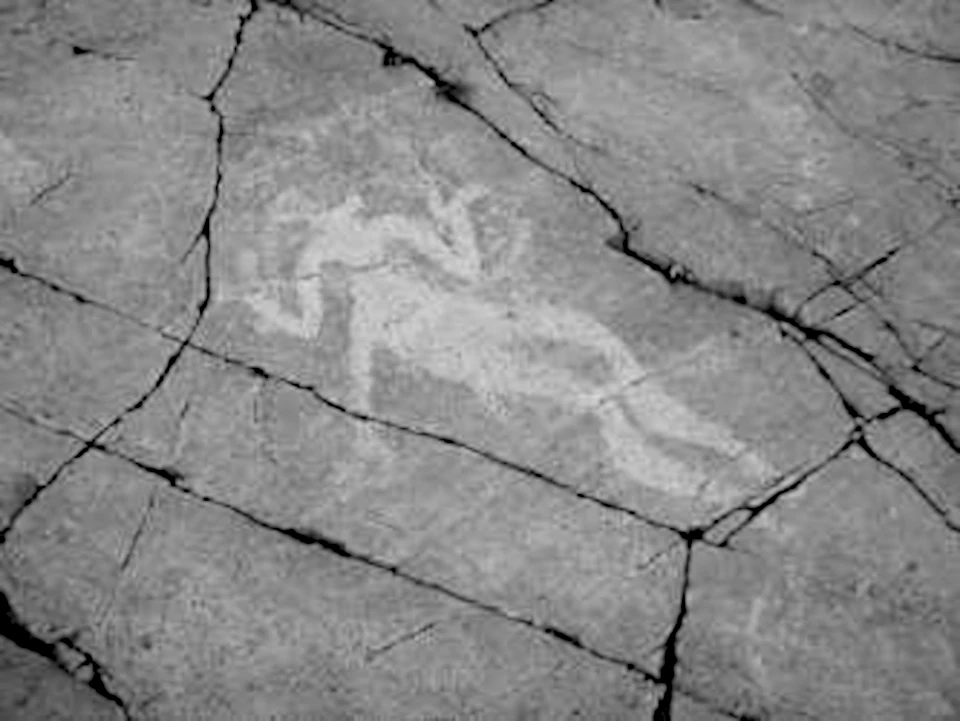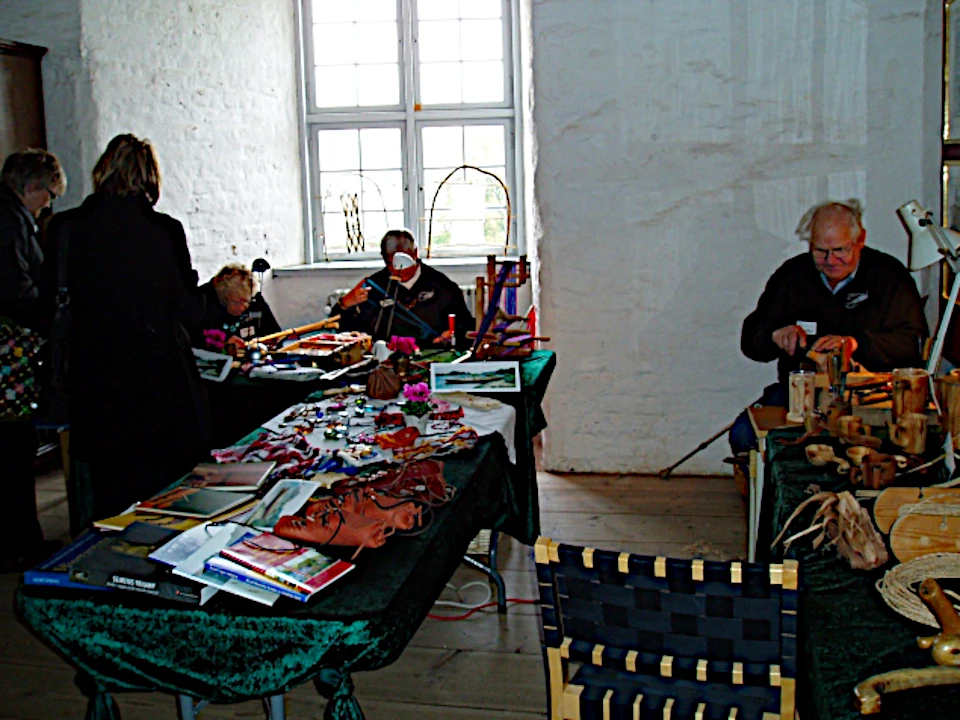Dyvig
The pictures on the back wall are painted by Birgit Valbjørn. They show her interpretation of the sacrifice in Hjortspring Mose in the Pre-Roman Iron Age. The paintings now adorn our lecture theatre at Linde Yard.
1998
Hjemsted Oldtidspark
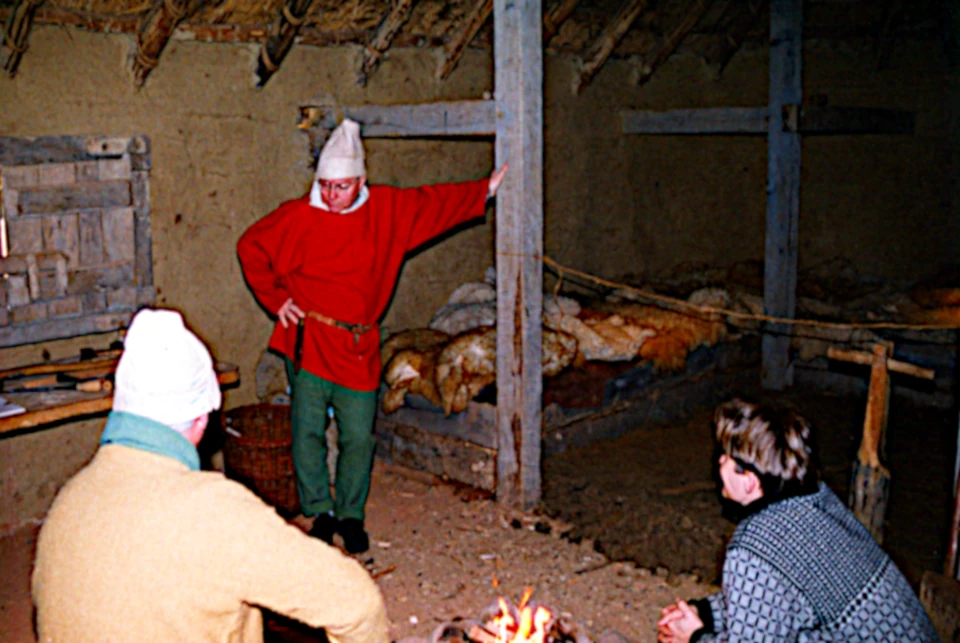
Here we demonstrated our craft.
Foto: Aage Jensen.
At Easter, we participated as working Iron Age craftsmen in one of the "Iron Age houses" on the park grounds. Hjemsted Oldtidspark was a museum for the early Iron Age and an adventure park. Unfortunately, it is now a thing of the past.
2005
Simrishamn
From Newsletter 2005-02
On Sunday morning we met with the director of the museum, Lena Alebo, who showed us around the museum and told us a little about the city. It was a Hanseatic city and had its heyday in the days of sailing ships. After the tour, we said goodbye to Lena and invited her to Holm to see our shipyard. At 10 o'clock we started the trip home and by 6 o'clock we were back home after a successful trip - and what did we learn from it? Already in Fynshav, Danish and German tourists came to see what we were doing, so it was good that we didn't have to take more ferries, otherwise we probably wouldn't have reached Sweden in one day. On the ferry, there was talk that it was a boat from the Viking Age. It made you tingle a little, but you can't interfere in other people's conversations. That's a little bit about the Sweden trip.
Jørgen Jessen
The handicraft exhibitions at Sønderborg Castle
For many years we have participated in the annual handicraft exhibitions at Sønderborg Castle. The set-up was always almost the same:
In the castle courtyard, by the northern stair tower, we had the centrepiece mounted on a trailer and a tent with a working smithy where guests could try forging a nail.
In the knights' hall, or in one of the antechambers, we exhibited our handicrafts and demonstrated some different techniques.
If you have any comments on this article, you can send an e-mail to the
Please do not overwrite the existing text in the subject field, I need
information to see which article you are writing from. Feel free to add
your topic afterwards.





